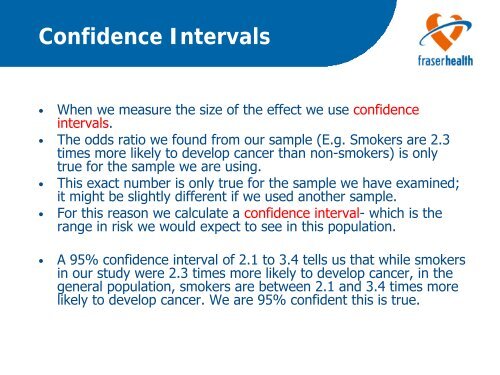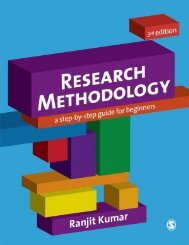Introduction-to-Statistics-and-Quantitative-Research-Methods
Introduction-to-Statistics-and-Quantitative-Research-Methods
Introduction-to-Statistics-and-Quantitative-Research-Methods
- No tags were found...
Create successful ePaper yourself
Turn your PDF publications into a flip-book with our unique Google optimized e-Paper software.
Confidence Intervals• When we measure the size of the effect we use confidenceintervals.• The odds ratio we found from our sample (E.g. Smokers are 2.3times more likely <strong>to</strong> develop cancer than non-smokers) is onlytrue for the sample we are using.• This exact number is only true for the sample we have examined;it might be slightly different if we used another sample.• For this reason we calculate a confidence interval- which is therange in risk we would expect <strong>to</strong> see in this population.• A 95% confidence interval of 2.1 <strong>to</strong> 3.4 tells us that while smokersin our study were 2.3 times more likely <strong>to</strong> develop cancer, in thegeneral population, smokers are between 2.1 <strong>and</strong> 3.4 times morelikely <strong>to</strong> develop cancer. We are 95% confident this is true.





